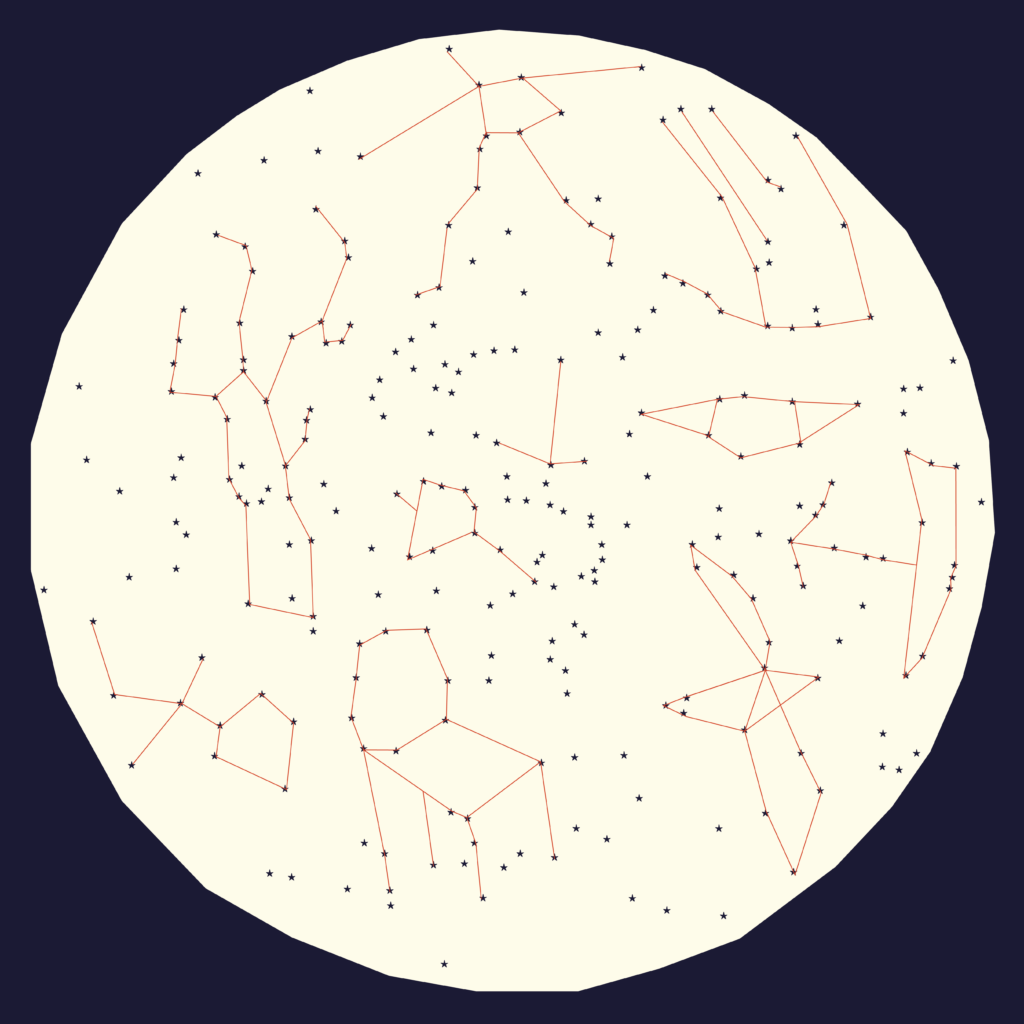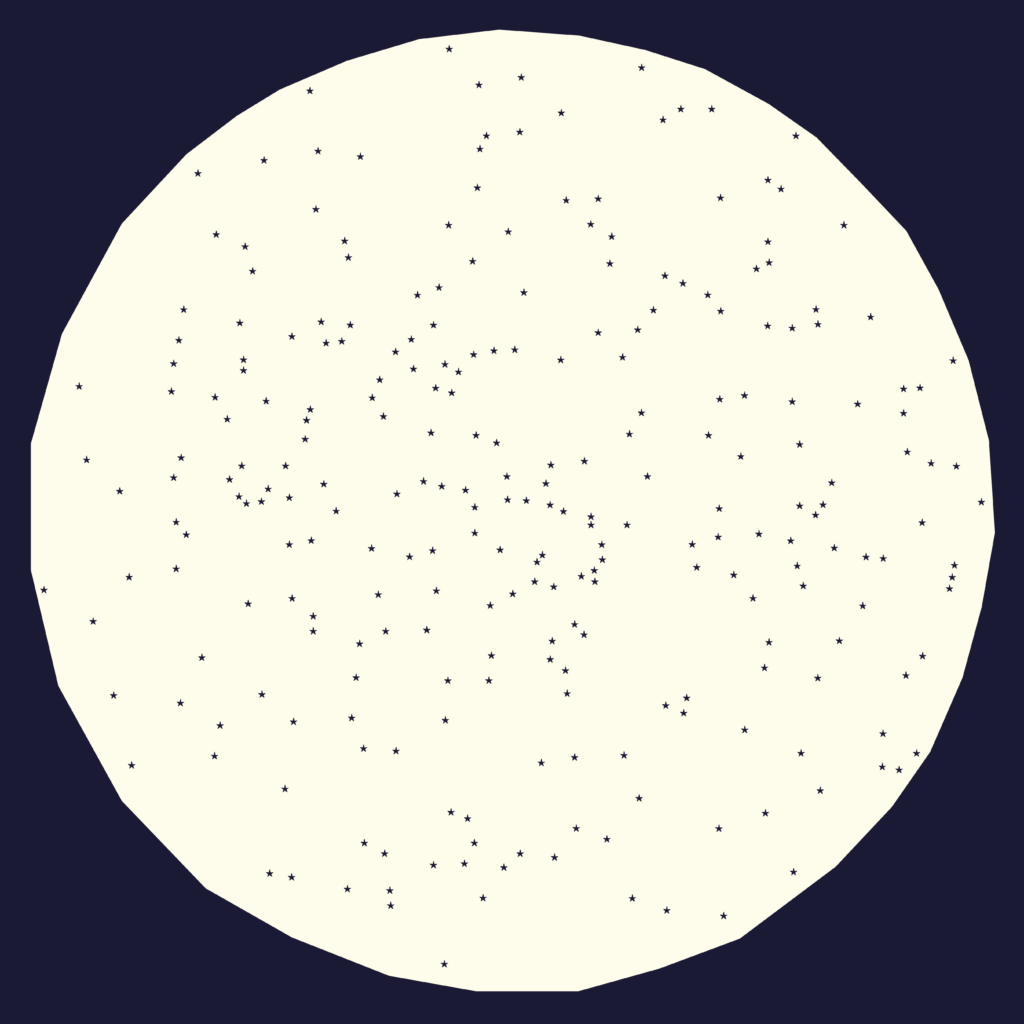14 And God said, “Let there be lights in the expanse of the heavens to separate the day from the night. And let them be for signs and for seasons, and for days and years, 15 and let them be lights in the expanse of the heavens to give light upon the earth.” And it was so. 16 And God made the two great lights—the greater light to rule the day and the lesser light to rule the night—and the stars. 17 And God set them in the expanse of the heavens to give light on the earth, 18 to rule over the day and over the night, and to separate the light from the darkness. And God saw that it was good. 19 And there was evening and there was morning, the fourth day.
Genesis 1 v.14-19 (ESV)
On the fourth day of Creation we see the light and darkness that were created on the first day become populated with the sun, moon and stars. It’s strange to see the intricacies of the cosmos summed up so briefly, almost nonchalantly in verse 16, particularly the throwaway line ‘He made the stars also’. Perhaps even stranger though is God’s reasoning for creating the sun, moon and stars. He talks about giving light, and separating day and night- these things we might expect, but it also says He created these great astral bodies to mark seasons, days and years.
It’s certainly a bold claim to say that the entire cosmos was designed to be a light giving calendar, and it’s undeniably a very human-centric view of the universe. At surface level it seems outrageously arrogant for humanity to look up at the night sky and say all of this was made for our benefit. Indeed the Church has something of a history using the Creation story to justify its arrogance, whether it’s the persecution of Galileo or the damaging approach to Climate Change that plagues elements of Christianity to this day. Far better I think to speak with the humility of the Psalmist:
3 When I look at your heavens, the work of your fingers,
Psalm 8 v.3-4 (ESV)
the moon and the stars, which you have set in place,
4 what is man that you are mindful of him,
and the son of man that you care for him?
Yet God of course is mindful of us, just as he was when creating the sun, moon and stars. How do we hold this incredible idea that God made the cosmos for us without falling into the trappings of self-importance?
An answer I think can be found in the purpose of this ‘calendar’ that God has made, the NIV translation brings out the context of the word ‘signs’ in verse 16, elaborating that they are to mark sacred days. Later in the Bible we see that God designates certain days in the Lunar calendar in which his people, the Isrealites, are to stop, remember, celebrate Him and the things that he has done for them. God has not created the sun, moon and stars so that we can plan a fiscal year or remember our birthdays, but to help us draw near, to lead us towards the loving relationship he longs to have with us.
This pattern can be seen in the Bible beyond the Hebrew religious holidays- Isaac is reminded of God’s promise and purpose for him by the stars in the sky (Gen. 26v.4); Isaiah uses the cosmos as an image of God’s majesty (Isaiah 40v.26). In one of my favourite Bible verses the poet of Song of Songs sees the beauty with which God has made the sun, moon, and stars reflected in their beloved (Song of Solomon 6v.10); most dramatically of all the Magi and shepherds are literally led to God by a star in the Nativity story. Throughout history people have searched for messages in the lights of the sky, but God created them to speak only of himself and his intent to know and be known by us in Love. There can be no arrogance or self-importance in understanding this, only gratitude that the Creator is calling us to himself with open arms.
A Potential Response
Consider the feeling of the sun’s warmth on your skin; step out into the night and look up at the moon; browse NASA photos of distant galaxies. How can these things speak to you about God?
In a period when all of our calendars have changed dramatically, what do sacred times mean to you? How can they help you to know God?

As an aid to my own reflection I made this map of the stars, onto it I have drawn some constellations of my own invention. The constellations represent things I am grateful for, like my daily walks (top central), or ways in which I feel God is moving towards me in this period, for example the chair and bell (bottom central) represent God calling me to sit at the table with him and spend time in his presence. Here is a blank map if anyone else would like to try some reflective dot to dot.





